Clustering
Clustering
- Broad set of techniques for finding subgroups.
- Observations within groups are quite similar to each other and observations in different groups quite different from each other.
Clustering methods
- Partitioning: k-means clustering
- Agglomerative/divisive: hierarchical clustering
- Model-based: mixture models
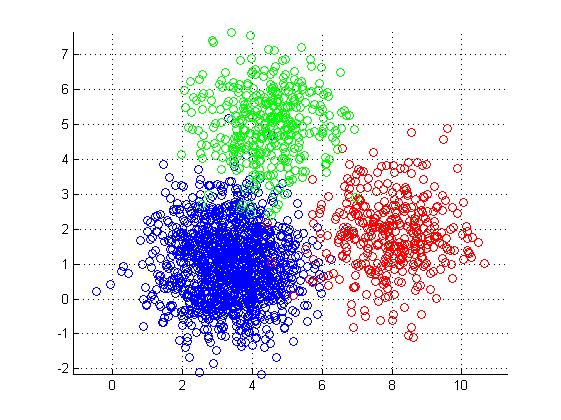
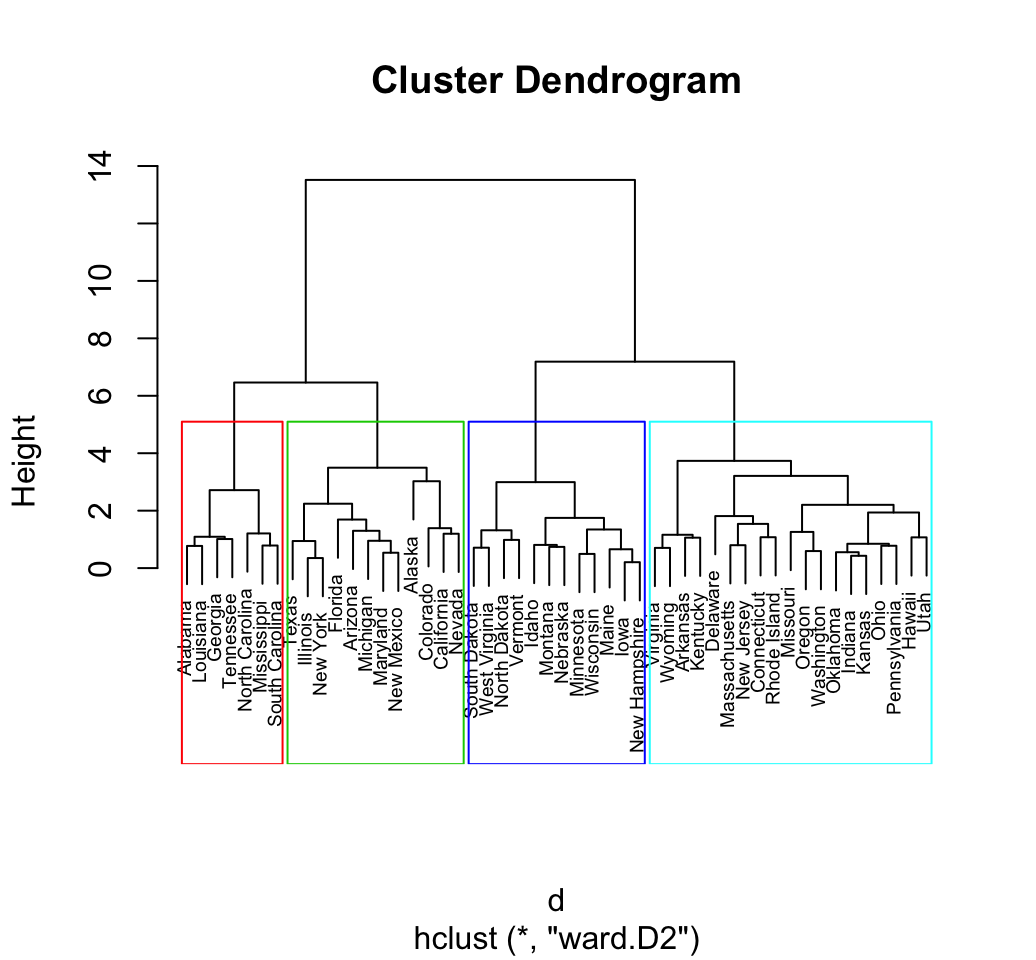
K-means clustering
- Simple approach to partitioning a data set into K distinct, non-overlapping clusters.
- K is specified beforehand.
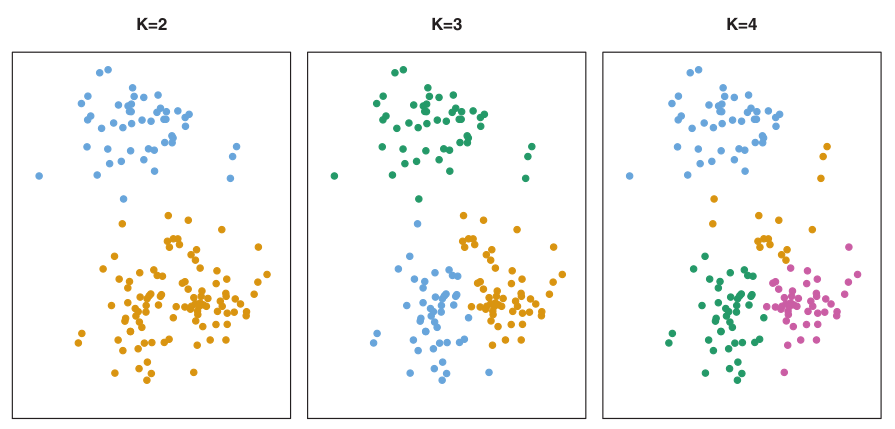
K-means algorithm
- \(K\) – number of clusters.
The process:
- Randomly assign each observation to groups 1 to K;
- For each of K clusters, derive its centroid (midpoint);
- Reassign each observation into a cluster whose centroid is the closest;
- Iterate until stability in cluster assignments is reached (local vs global optima).

Some properties of K-means partitioning
- Standard algorithm for k-means clustering is using Euclidean distance (distances are calculated using Pythagorean theorem).
- Different local optima (stability) can be reached.
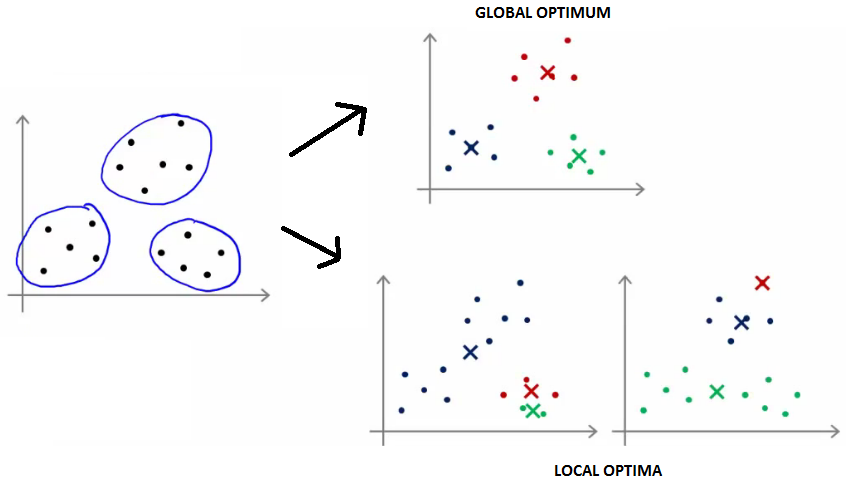
Number of clusters K must be specified in advance
How to determine optimal number of clusters?
- Elbow method,
- Silhouette method
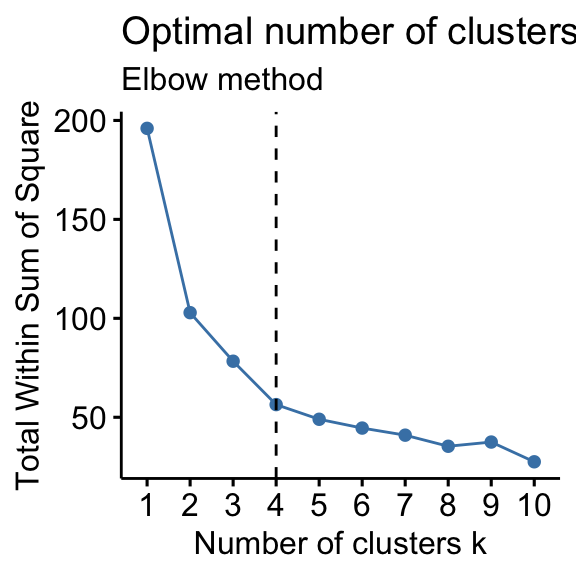
Hierarchical clustering
- The number of clusters is not specified beforehand.
- Output is a dendrogram – a hierarchical structure visualizing the cluster growth.
- Starts with a distance matrix.
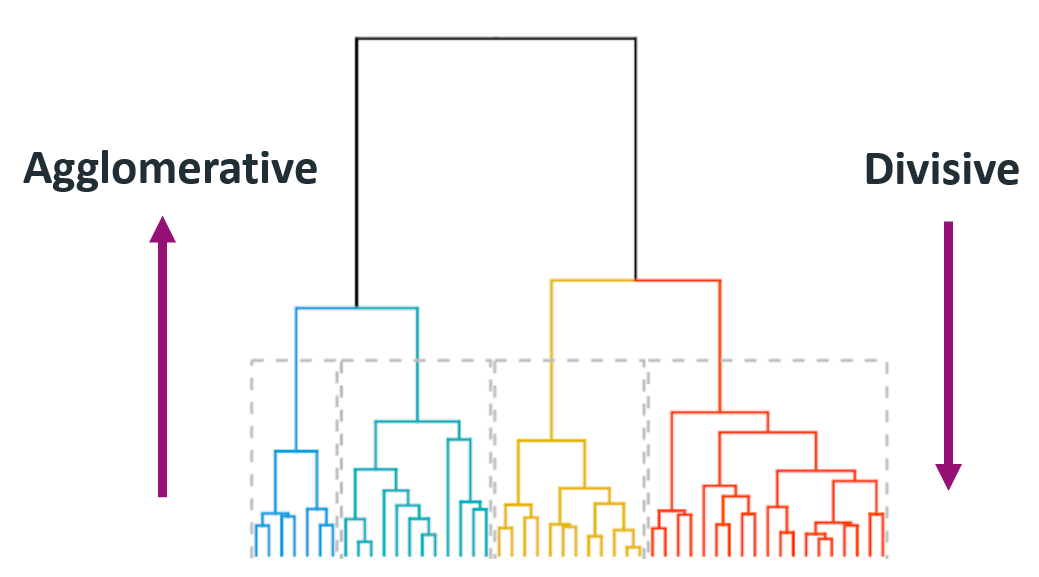
Agglomerative
- Builds the hierarchy of clusters from bottom-up until a single cluster is reached.
- Put each object in its own cluster;
- Join the clusters that are the closest;
- Iterate until a single cluster encompassing all objects is reached.
Divisive
- Divides a single large cluster into individual objects (top-down).
- Put all objects into a single cluster;
- Divide the cluster into subclusters at a similar distance;
- Iterate util all objects are in their own clusters.
Hierarchical clustering algorithms

Clustering methods comparison
K-means partitioning
- Pre-specified number of clusters.
- Clusters may vary (different local optima).
- Best when groups in data are (hyper)spheres.

Hierarchical clustering
- Variable cluster numbers.
- Clusters are stable.
- Any shape of data distribution.
